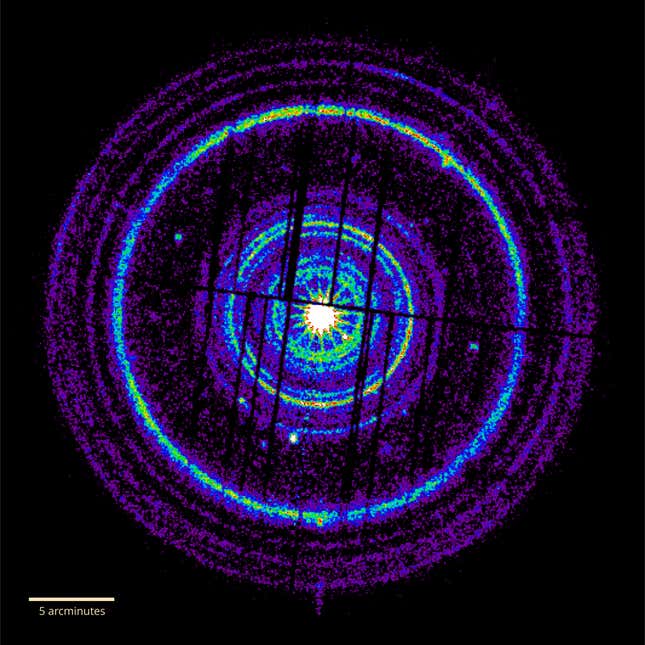In October 2022, an extremely bright flash caught the attention of the Gemini South telescope in Chile. It was quickly determined to be the brightest ever seen, hence its nickname: the Brightest Of All Time (the BOAT).
Now, a group of researchers has examined the event with the Webb Space Telescope and concluded that the BOAT’s cause was a supernova: an explosive and brilliant death of a star. The researchers also looked for heavy elements like gold and platinum but saw no signs of them, leaving the question of their origins just as open as before. The team’s research is published today in Nature Astronomy.
Advertisement
Heavy elements are produced by neutron-star mergers—at least, some of them are. The heavy stuff in the universe is too abundant for such stellar mergers to account for all of them. Even after two stars in a binary system explode, leaving the dense shells that are neutron stars, “it can take billions and billions of years for the two neutron stars to slowly get closer and closer and finally merge,” according to Peter Blanchard, an astronomer at Northwestern University and the study’s lead author, in university release.
Advertisement
“But observations of very old stars indicate that parts of the universe were enriched with heavy metals before most binary neutron stars would have had time to merge,” Blanchard added. “That’s pointing us to an alternative channel.”
Advertisement
Gamma-ray bursts come in two flavors: long- and short-duration. Short bursts are associated with stars merging and black holes forming, according to NASA, while the longer bursts are associated with stellar deaths. The BOAT is staunchly in the latter camp.

Advertisement
The team intentionally waited for several months after the BOAT was detected to turn the Webb Telescope toward it. That’s because the explosion was so bright—and that brightness persisted for so long—that they needed to wait for the event to fade to spot any sign of the supernova that bore it.
Using the telescope’s Near Infrared Spectrograph (NIRSpec), the team looked at the elements typically seen in supernovae. The signal wasn’t particularly bright, indicating that the supernova that yielded the brightest gamma ray burst ever seen wasn’t superlative itself.
Advertisement
“This event is particularly exciting because some had hypothesized that a luminous gamma-ray burst like the B.O.A.T. could make a lot of heavy elements like gold and platinum,” said study co-author Ashley Villar, an astrophysicist at Harvard University and the Center for Astrophysics | Harvard & Smithsonian, in the release. “If they were correct, the B.O.A.T. should have been a goldmine. It is really striking that we didn’t see any evidence for these heavy elements.”
Long gamma ray bursts are those that last more than two seconds. The BOAT lasted a staggering 10 hours, according to ScienceNews. But if we’re being technical, the BOAT isn’t actually the BOAT. But it is “likely the brightest burst at X-ray and gamma-ray energies to occur since human civilization began,” according to Eric Burns, an astrophysicist at Louisiana State University a co-author of a study describing the signal.
Advertisement
A year and change after the signal, a scientific collaboration determined that the BOAT put out gamma-rays with energies reaching up to 13 teraelectronvolts—the same energy as CERN’s Large Hadron Collider during its second run.
Scientists continue to sift through the trove of data yielded by the BOAT. Last June, a group reported on the structure of the burst’s jet, which may cause physicists to rework their models of jet structure. Despite all its accolades, the BOAT is not the largest explosion ever seen in space; that title belongs to AT2021lwx, a nearly 8-billion-year-old outburst from a distant black hole and the gas cloud surrounding it.
Advertisement
Astronomers will likely see more explosions like it—and like the BOAT—when next-generation observatories come online. One of the facilities with the most hype around it is the Vera Rubin Observatory in Chile’s Atacama Desert, which will use a 3.2-billion-pixel camera to collect terabytes of data on the southern sky every night.
More: The World’s Biggest Digital Camera Is Finally Complete
Services Marketplace – Listings, Bookings & Reviews